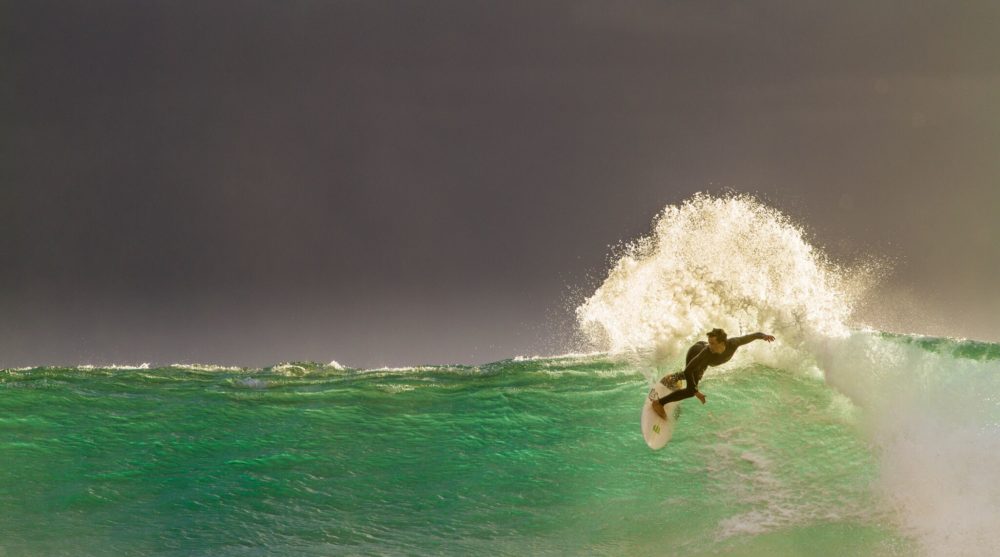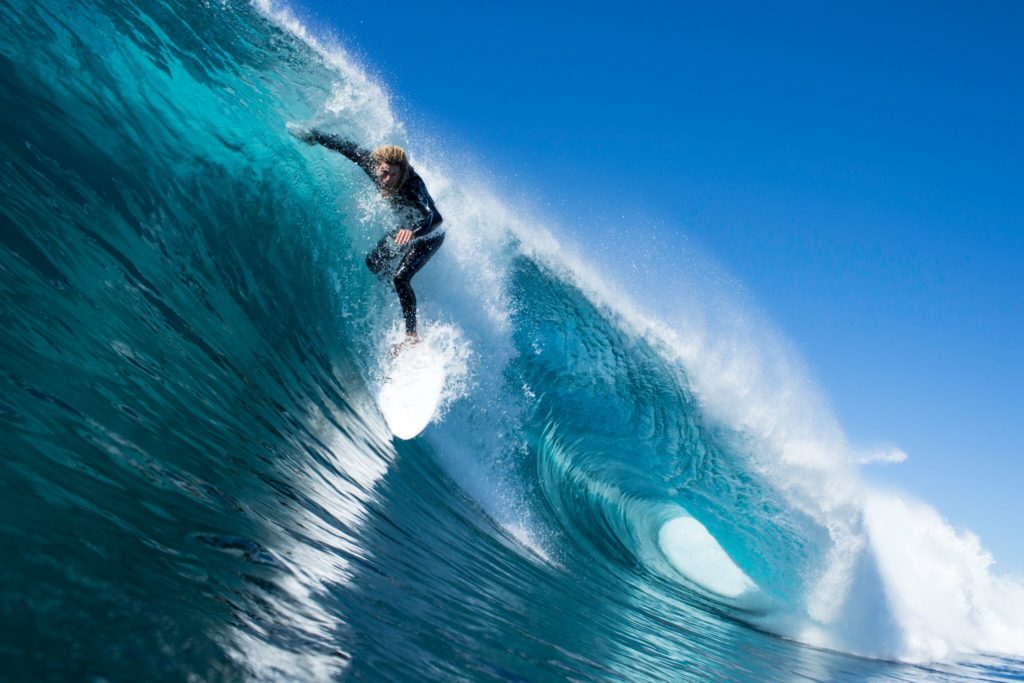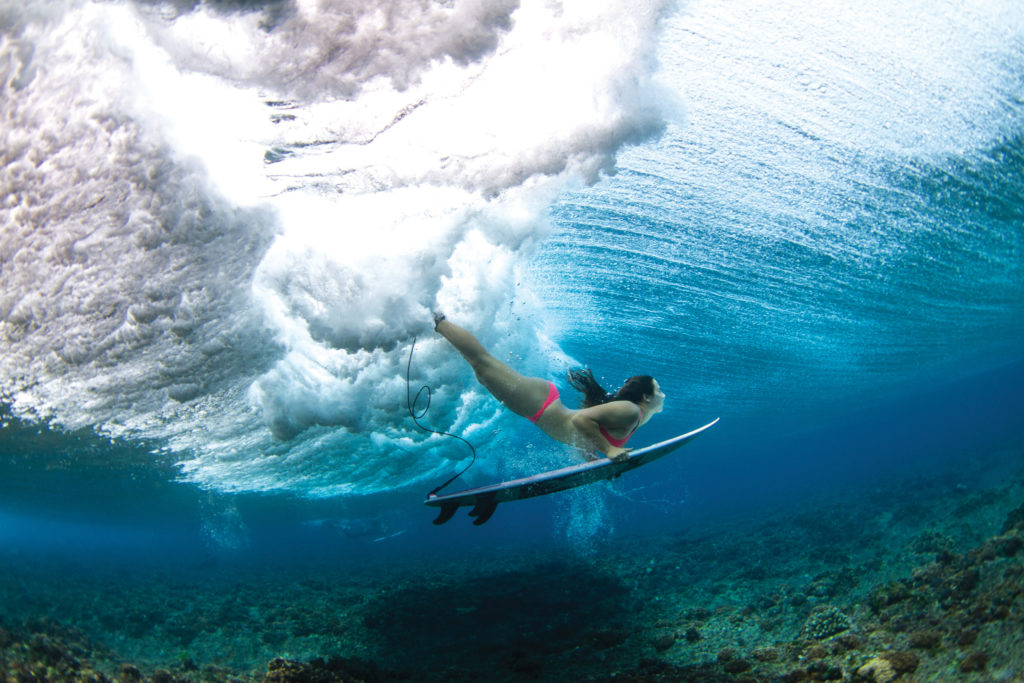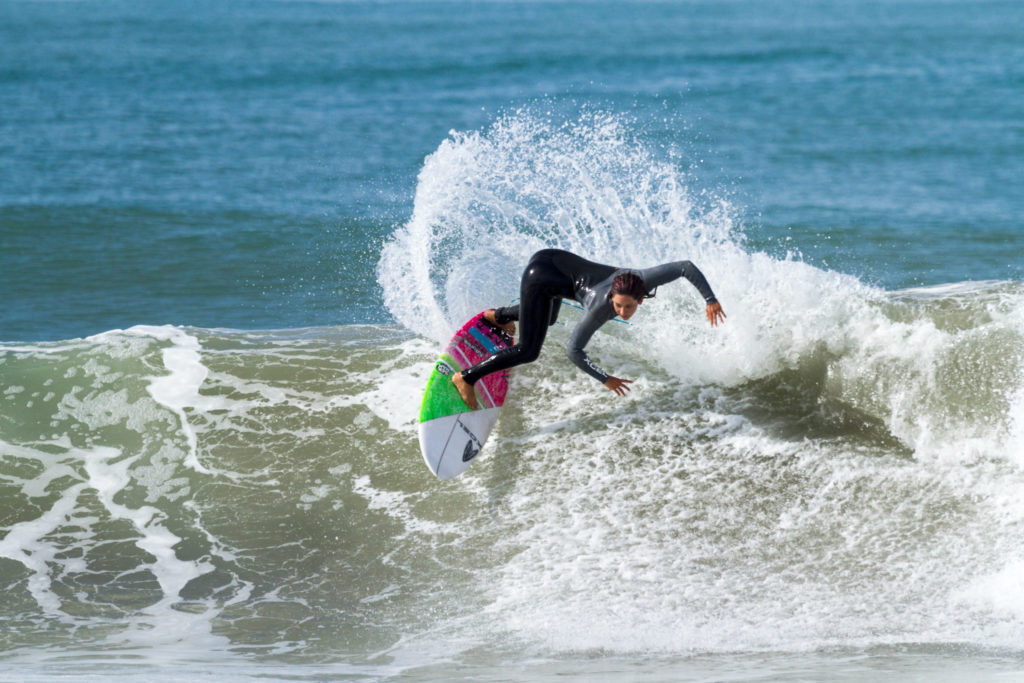
When you are starting to make some real progress on your entry level minimal surfboard, what would be your next step? A high volume shortboard with be he ideal progression giving you more performance than a minimal, yet remaining more stable and more forgiving what an ultra thin performance shortboard. These boards are the ideal ‘next step’, as they still hold higher volumes so that you can paddle and catch waves easily, whilst giving you the ability to duck dive your board to get out back
By now your wave count and paddle strength should be improving. You’re now completing some basic bottom and top turns, “and wait, was that a cut back I just completed?” If you find that you’re now catching waves more comfortably, popping up to your feet is starting to feel like second nature and you’re starting to complete a few turns, you may be ready for the next step.
Here are some of the benefits of the higher volume shortboard as a way of improving, whilst maintaining your confidence in the water.
This is an advantage as the board becomes more manageable in the water. You will have more control when paddling out, especially on big or messy days. And as you try to turn on the face of a wave, your board will feel more agile, this means you’ll be able to move and pump the board around to the more powerful sections of a wave and generate speed. As there is now less volume on the nose and more rocker (curve of the board from the centre point through the nose), you will not find the nose digging into the water on steeper waves.

Now that you’re catching bigger, cleaner waves the ‘next step’ surfboard will give you added manoeuvrability, and will not feel as heavy to turn. The reasons for this will be:
“To push your surfboard under an on coming wave or white water by pushing the nose under and following with your body, then using your knee or foot on the back quarter of the board to push the nose up once the wave has passed over you.”

By being able to duck dive, this will open up your surfing to more waves, as now you’ll be able to ‘duck’ under on coming waves and white water get get to a spot ‘out back’, where it is calmer and where the waves will break cleaner.
The less rounded nose of a higher volume shortboard will mean the that surfboard will not hold as much volume up front. With this reduced volume up front this will make the nose on the board easier to sink, and as a result much easier to duck dive on coming waves. The disadvantage of less volume in the nose will be slower paddling (compared to a minimal or longboard), however by now your paddle strength and speed should compensate the reduced volume.
To start progressing you will need to be able to paddle out to the back of the line up where the bigger waves are breaking. The ability to duck dive is an important skill to have, and if you can manage it on a higher volume shortboard, by the time you progress to a smaller perfomance board this will come very easy.
The sort of shortboard you should be looking at now as the next step from a minimal surfboard would be, relative to ability and weight between 6’10” to 6’3″, but (this is the important bit), you need width to give you added stability. Generally, you should be looking at boards that are between 21 1/2″ and 19 1/2″.
The heavier surfer should look for more length and width, lighter surfers less. As discussed in Why a minimal surfboard is the ideal beginner’s board, size weight and ability are relative to the size board you should be looking at. Heavier surfers will sink the board more, meaning it will feel slower to paddle and less stable.
As a general case study in the shop, an “heavier” adult male who has surfed an 8ft Minimal would look to progress on to a board around 6’10” – 6’6″ and the is around 21 1/2″ wide. Ladies or children who have mastered the 7’6″ – 6’10” minimal would generally look to get into a 6’6″ – 6’3″ shortboard. Below are some examples of what we would have in the shop:
To Summerise
This most important factor to consider when dropping shortboard size is not to drop too much too quickly. By doing so you risk having a board with not enough volume for your ability and as a result you may find that you may not be able to paddle your board fast enough, and will very quickly get frustrated paddling around almost catching waves, whilst watching others picking waves off as they please.
However by getting the right board size for your ability, you’ll find that you will be able to duck dive and get out back quicker, catch bigger, steeper waves. Once riding on a beautiful walled up peeler, you will find that the board will feel more agile as you manoeuvre around the face of the wave with more ease.

If you are ever unsure, always talk to your local surf shop, as they will have a good understanding about your needs, especially if they’ve seen you surfing on their local break. Most shops should also have demo boards to try out, that is the best way to really know what board will be right for you.
Get Involved